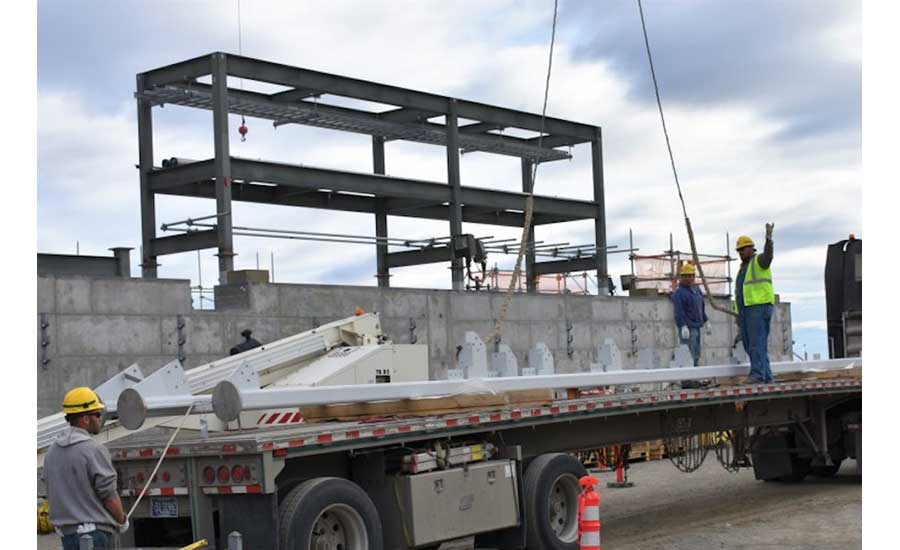An additional 40 tons of structural steel is sitting on the Dept. of Energy Hanford Nuclear Waste Site in southeast Washington, where Bechtel National Inc. plans a new tower as part of the multi-billion-dollar Waste Treatment and Immobilization Plant.
Known as the Vit Plant, since the facility will turn 56 million gallons of chemical and radioactive waste into vitrified glass, Bechtel continues the laborious process of both designing and building a structure unlike any in the world. The arrival of the steel marks a key addition to the Effluent Management Facility (EMF), which will work along with double-walled underground transfer pipes in supporting the main waste treatment facilities.
Once the tower is fully assembled with its internal evaporator equipment, construction crews will hoist the entire unit and safely set it inside the EMF, according to Bechtel.
The steel will rise 45 ft tall and measure 20 ft wide and 20 ft long in order to house evaporator equipment which will support plans to treat tank waste through its direct feed low-activity waste vitrification approach. The tower steel was fabricated in Idaho Falls, Idaho, and received a special chemical-resistant coating in Great Falls, Montana. It was then transported to the Vit Plant job site via 16 heavy-haul trailers.
“The arrival of the evaporator tower steel is yet another sign of progress for EMF, which is critical to achieving the start of direct feed low-activity waste,” says Jason Young, Office of River Protection federal project director.
During low-activity waste vitrification operations, secondary liquids will be generated from the melter off-gas system and when transfer pipes are flushed. These liquids will go to the EMF where excess water will evaporate away and the remaining concentrate will be sent back into the vitrification process.
“We recently completed the walls for the effluent management facility,” says Brian Reilly, Bechtel senior vice president and project director for the Vit Plant. “Receiving the necessary permit authorization will open the gateway to install equipment into the building and continue the Balance of Facilities construction progress.”
The entire conglomerate of structures includes treatment of low-activity waste and high-level waste an analytical lab and a collection of more than 20 support facilities.
Follow Tim Newcomb on Twitter at @tdnewcomb.


Post a comment to this article
Report Abusive Comment